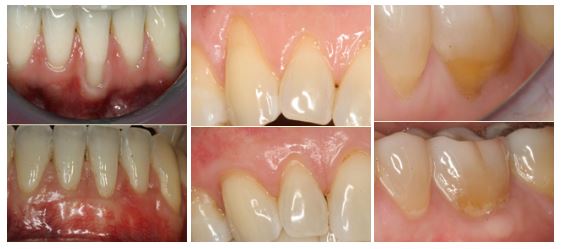 Dr. Stephen Brown Has Received the Advanced Pinhole Clinician Award by Dr. John Chao inventor of the Pinhole Surgical Technique.
Dr. Stephen Brown Has Received the Advanced Pinhole Clinician Award by Dr. John Chao inventor of the Pinhole Surgical Technique.
This award has been presented to less than 100 dentists worldwide and represents achieving the high level of proficiency in providing the procedure to his patients with gum recession.
Dr. Brown has been an invited lecturer on the subject of PST at dental schools, study clubs and prestigious dental conferences across the USA.
Gums are essential to your dental health. Gums are the layer of pink tissues surrounding your teeth which is a barrier protecting the roots of your teeth. Gum tissue also protects the jaw bone, which connects the teeth to in the jaw.
As we age, gum recession can become more pronounced. One of the primary symptoms is thermal (Hot-Cold) sensitivity. However, receding gums are preventable with proper periodontal and maintenance therapy.
If symptoms are caught in time, there are many effective procedures for repositioning the gums to cover areas of root recession and sensitivity. The Pinhole Surgical Technique is a revolutionary, minimally invasive, and very predictable treatment for gum recession.
Signs and Symptoms of Gum Recession
The most important thing to know is GUM RECESSION IS NOT Normal! It is a symptom of underlying gum disease!
Before we can actually observe recession, there are ways to tell if your gums are receding. In the very early stages of gum recession it is frequently NOT visible to the naked eye. But there are other ways to tell if your gums are at risk.
- Tooth Sensitivity- You may begin to notice that your teeth are a sensitive to cold, acidic, and sugary food or drinks. This is usually one of the earliest symptoms. From time to time sensitivity may be a transient finding. However, if you experience a noticeable increase in sensitivity, it’s time to visit our office.
- Inflamed Gums- You may start to see inflamed, tender and red gums. They can appear or feel swollen and may bleed easier when brushing and flossing. This is another sign that gum recession is starting and if it is ongoing it should be addressed immediately and aggressively. The most modern treatments are minimally invasive.
- Longer Teeth- As you brush your teeth or look in the mirror, you may notice that your teeth seem longer. If that is the case, it could be an indication of progressive gum recession and definitely represents a reason to come in and have it checked out by a periodontist. It is a significant cosmetic and dental health concern that needs to be addressed. The greater the recession, the more pain and sensitivity you will experience.
- Discolored Teeth – When the gums recede it is very common for the teeth to look yellow or brown. These unsightly changes are related to the gum receding down the root away from the pearly white color associated with enamel.
- Decay of the Roots of Teeth – Teeth with recession are exponentially more likely to develop tooth decay. This is because the roots of the teeth are made up of cementum, which is far softer and less impervious to the bacteria that cause tooth decay.
- A Noticeable Notch at The Gum Line- If recession has started there may be a physical way for you to tell at home. Take your finger nail and run it along where your gum meets the tooth. If there has been any recession, then there may very well be a minor notch or ledge that you can feel with your finger nail. This means that there has been some erosion of the root surface which is not covered by the protective coating of enamel.
Consult with a periodontist who can assist you in changing habits that may be contributing to gum recession. Being consistent with these recommendations, can prevent further progression of gum recession.
Once gum recession has already begun, it is important to address it as quickly as possible to prevent any progressive and potentially irreversible damage. Dr. Brown is experienced in what it takes to keep gums and teeth healthy. Contact us today to schedule an appointment for gum recession treatment.
